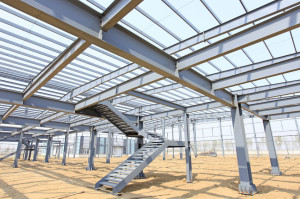What is Structural Engineering and what do Structural Engineers do?
 Ever since the dawn of civilization, humans have built structures for several purposes – ranging from residential houses to the Great Pyramids. Even today, our lives revolve around structures – from buildings to bridges to canals to skyscrapers and more.
Ever since the dawn of civilization, humans have built structures for several purposes – ranging from residential houses to the Great Pyramids. Even today, our lives revolve around structures – from buildings to bridges to canals to skyscrapers and more.
Although we rarely think about it, these constructions have internal structures that enable them to stand as a collapse may prove catastrophic. In this article, we examine the facet of engineering that tries to understand the mechanism of building reliable and safe structures.
What is Structural Engineering?
Structural engineering is a sub-discipline of civil engineering that involves the application of mathematical principles, the laws of physics, and empirical knowledge to design, construct and maintain the ‘bones’ or load-bearing elements of man-made structures.
Specializations in Structural Engineering
Structural engineering can be subdivided into several specializations. Some of which include:
- Building structures
- Earthquake engineering structures
- Civil engineering structures, like bridges, dams, railways, waterways, and more.
- Mechanical structures like cranes, elevators, marine vessels, and more
- Aerospace structures
- Nanoscale structures
Who are Structural Engineers?
Structural engineers are trained professionals that focus on the physical integrity and design of projects such as bridges, buildings, and waterways. They help ensure that these structures are safe, stable, and able to withstand external loads.
They accomplish this by applying their technical knowledge to specify the appropriate construction materials to use, as well as their shapes, geometry, and arrangement. All with the end goal of ensuring the structure withstand external stresses like gravity loads, earthquakes, and storms.
Stages in Structural Engineering Design
The structural design process of a building typically involves three stages: load calculation, structural analysis, and design.
- Load calculation
The initial step is to determine all the loads that will act on the structure upon completion. The functional purpose of the building in addition to building standards and codes are used to estimate the building’s weight, as well as external forces – like snow, earthquake, and wind – that will act on the building.
- Structural analysis
After all such loads have been determined, their impact on the structure itself is carefully studied to answer important questions like: Would a particular beam bulk under full capacity or thermal expansion? How would the building react to an earthquake of a particular magnitude? And more.
There is an engineering software that makes it easy to carry out this analysis. Thereafter, the results from the software are verified using first principle knowledge and simple structural analysis formula.
- Design
The stresses and forces derived from the analysis stage are used to design the structural elements of the building, like the foundation, floor system, vertical supports, load-bearing beams, and other parts of the building.
When Do You Need a Structural Engineer?
Structural engineers play significant roles in several building projects. Some of which include:
- Building new structures
Most people know they need an architectural plan before building a home. What they don’t realize is a structural engineer is often required in the planning stage. They help in designing the structural framework that will help support the aesthetic conception of the architect.
- Renovation projects
Renovation usually involves making changes to the structural component of a building. A major renovation might be extending your building by including a patio. While a minor renovation might be something like removing the wall between the kitchen and a room.
A structural engineer is needed to analyze how these changes will affect the load-bearing elements of the body. Hence, the right actions can be taken (like replacing the wall being removed with a beam and column system) to preserve the structural integrity of the building.
A renovation might also be needed after significant damage has been done to a building, typically by factors like an earthquake, fire, or just deterioration that occurs with time. Structural engineers analyze how the structural integrity has been compromised and how it can be rectified.
- Inspections for Home Purchase Transactions
Just because a building looks new or flashy doesn’t mean it is structurally sound. That’s why proper inspection is required before you buy a home.
A structural engineer will inspect more than what meets the eye – like the basement, beams, foundation, walls, and other structural components. The structural engineer might pick up on questionable structural components like large cracks in the foundation. Based on this, they will provide a scope of repair in an engineering report.
Such inspections are part of the due diligence process that will give you peace of mind before you purchase a property.
- Commercial Projects
Site inspection plays a crucial role in commercial project development. First off, a structural engineer examines the soil to see if it’s conducive to the project at hand.
The structural engineer then works hand-in-hand with the architect/design team to develop a robust construction plan that strictly incorporates safety considerations.
Once actual construction commences, the structural engineer often supervises project teams and is actively involved in the project management phase.
Wrap Up
The roles of structural engineering and structural engineers cannot be overemphasized. Ultimately, structural engineers help ensure that all the buildings and structures we see around are safe to use.
Feel free to reach out to us here for more information. We look forward to working with you on your next project.

